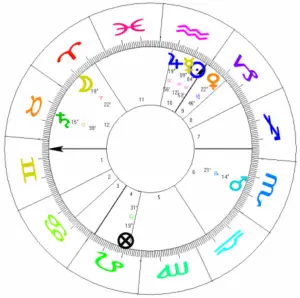
As someone who is fascinated by Elizabeth’s mother, Anne Boleyn, I find it ironic and also wonderful that it is Anne’s daughter, not the son Henry VIII so longed for, who made such an impact on the country and is known as one of England’s greatest monarchs. I know the scene in “Anne of the Thousand Days”, where Anne Boleyn yells at Henry VIII when he visits her in the Tower, is completely fictitious, but I love Anne’s speech:-
“But Elizabeth is yours. Watch her as she grows; she’s yours. She’s a Tudor! Get yourself a son off of that sweet, pale girl if you can – and hope that he will live! But Elizabeth shall reign after you! Yes, Elizabeth – child of Anne the Whore and Henry the Blood-Stained Lecher – shall be Queen! And remember this: Elizabeth shall be a greater queen than any king of yours! She shall rule a greater England than you could ever have built! Yes – MY Elizabeth SHALL BE QUEEN! And my blood will have been well spent!”
It always sends shivers down my spine and always makes me wonder if the real Anne had any inkling of what her daughter could become. I so wish Anne could have said that in real life!
Why the 15th January?

The 15th January 1559 was not chosen for convenience or because it suited everyone’s diaries, but, instead, it was chosen because it was an auspicious date for Elizabeth’s coronation.
In those days, astrological charts would be consulted to see what date would be best for such an important occasion and to get Elizabeth’s reign off to the best start possible. Sarah Rochel explains the importance of using astrology charts for important events, on her website “The Queen’s Astrologer”, far better than I ever could:-
“One of the working principles of astrology is that the beginnings of life – the birth of something or the seed of something – is of paramount importance. It signals the way things will develop and unfold in time. An astrological birth chart, therefore, can not only be used to examine the start of a person’s life (the birth chart or nativity) but can also be applied to, say, the start of a journey; the laying of a foundation stone; the signing of a contract. Anything.”
Those people who wanted Elizabeth’s reign to be a success realised that they needed the help of John Dee, the famous Elizabethan scholar, astrologer, astronomer and mathematician, a man who had tutored Edward VI and Elizabeth’s childhood friend Robert Dudley. It was Robert Dudley’s idea to call on John Dee to draw up a special astrological chart known as an “electional chart” to find the best time and date for the beginning of the new queen’s reign, for the birth of the Elizabethan age, for Elizabeth I’s coronation.
Mary I died on the 17th November making Elizabeth the new queen, so John Dee did not have a whole year to choose from, the coronation could not be delayed for months on end, nor could it happen within just a few days as preparations would have to be made and people informed. Dee, therefore, did the best he could, he picked the most auspicious time and date of the few months that he had to play with. The chart, therefore is not ideal or perfect, but I think that Elizabeth’s long and successful reign shows that Dee did a great job!
The Coronation Chart
I am completely clueless when it comes to astrology and reading charts so thanks go again to Sarah Rochel, who I think might need to give me a crash course! The chart is hers and so is the reading of it, although I have attempted to explain it.

In the chart, an astrologer would see that the great “malefic” planets of Mars and Saturn are in an opposing aspect, which usually would be of concern, but this negative is made up for by the positives in the chart. Mars is located in its own sign of Scorpio which gives the planet strength and dignity meaning that it would be able to overcome the planet Saturn which, according to Sarah, is in the “hidden 12th house of secret enemies”. Also Mars is located in “the 6th House of service and servants”, signifying that Elizabeth would not be on her own in struggling against these secret enemies but that other would come to Elizabeth and England’s aid.
In this chart, the Luminaries (the Sun and the Moon) are both in favourable aspects to the bodies in Elizabeth’s natal chart (her birth chart), such as Venus and Jupiter, the planets known as “the fortunes”. An astrologer would see that the Sun makes a trine (12o degree separation) aspect to the Venus of Elizabeth’s natal chart and that the Moon makes the same trine aspect to Jupiter. The fact that John Dee chose a date with these aspects shows that he was interested in Elizabeth’s personal welfare, not just the success of the reign for her country.
In the coronation chart, John Dee also made use of the fixed stars such as Regulus and Fortuna, a star associated with fame, glory and honour when seen on charts like this. The Moon on this chart is in a favourable aspect to both these stars. A set time of noon for the coronation is favourable for royalty because the Sun is on the mid heaven of the chart, although this timing also puts both Mars and Saturn in the 12th and 6th Houses which are associated with weakness. However, any negatives associated with this, like enemies, are cancelled out by 90 degree aspect from Jupiter, “the planet of preservation and good joy”, which is prominent, meaning that partners and allies would help fight the enemies signified by Mars and Saturn’s placements.
The star Fortuna is on the cusp of the 4th House which signifies that Elizabeth would have excellent judgement, the country would be a strong power base, she would have the support of her people and be a popular monarch, and England would be fortunate in both its resources and its people. The planet Mercury, the ruling planet of Virgo the Virgin and Elizabeth’s own ruling planet, is in a strong position on the coronation chart as it is in a trine aspect to Gemini from the 10th House, a place of power, and is also ruler of the ascending degree in Gemini
In an article entitled “Elizabeth I, the Virgin Queen”, Sue Toohey writes of Elizabeth’s coronation chart:-
“Elizabeth’s transits to her natal chart at the time of the coronation included Jupiter sextile Jupiter, which became exact on the day of her coronation along with Venus trine her Sun, making it a very pleasant occasion. Venus opposed Saturn and, Mars was conjunct her Mars ruled Mc [Medium Coeli or Midheaven] showing that she would not be a weak and feeble monarch but one who would rule with great fortitude. What Dee would not have known is that Uranus was on her Mc and Mars was trine Uranus. This would bring dynamic leadership and great self-determination to her rule. She would not be constrained by what others had done before her and would create her own style of rule. Pluto was sextile both her ascendant and Moon bringing with it great responsibility of authority over the people she was to rule. An eclipse of the Sun had made a very close conjunction to her natal Moon a few months previously. Elizabeth took her responsibilities very seriously and saw that the first of those was always to the people she ruled. She promised that she would always put them first and it was often cited as one of the reasons for choosing never to marry.”
Conclusion
I’d like to conclude with the words of Sarah Rochel who has helped me so much with this site and with trying to get to grips with astrology:
“Dee made the best of an imperfect situation and turned the negative features of the chart to England’s best advantage, while emphasising those other features which were naturally favourable on the day. A fair beginning for Albion’s ‘Golden Age.’ and a a masterful piece of astrology, as history has testified.”
How true! Whatever we believe today, and our own personal opinions of astrology, Elizabeth and her friends and advisers must have been 100% satisfied with this coronation chart. It heralded in a Golden Age, a far more successful reign than Elizabeth’s recent predecessors and a country that was strong and prosperous.
A Tale of Two Coronations
Elizabeth used the lavish coronation of her mother Anne Boleyn as the inspiration for her own coronation – click here to read my article on this over at The Anne Boleyn Files, but here are a few of the similarities:-
- Symbolism and imagery – Elizabeth lined the streets of her processional route with beautiful scenery, including a vignette of Anne Boleyn as Queen.
- The Virgin Mary – Anne had used representations of the Virgin Mary at her coronation but her daughter took this one step further by becoming the Virgin Mary. Elizabeth cultivated the image of she, herself, being the Virgin Mary on Earth, the Virgin Queen and Gloriana – a divine presence on Earth. Tracy Borman, in her book “Elizabeth’s Women”, writes of how this imagery secured the love of her subjects and is the image that Elizabeth is still famous for cultivating.
- Elizabeth’s outfit – Elizabeth modelled her coronation outfit on her mother’s, appearing in a beautifully brocaded silk surcoat and an ermine trimmed mantle.
Sources
- http://elizabethsastrologer.ash.com/index.html – Sarah Rochel’s site on Astrology in the reign of Elizabeth I
- http://johndee.ash.com/index.html – A site all about Elizabeth I’s astrologer John Dee, a fascinating man.
- http://www.skyscript.co.uk/qe1.html – Sue Toohey’s article on Elizabeth I’s natal and coronation charts.
- Virgin and the Crab – A magical novel about John Dee and his role in helping Elizabeth become Queen of England.
- http://www.squidoo.com/john-dee
*Sarah points out that this was the date in the old style dating system and that if we transfer this date to the Gregorian Calendar then it would be more like the 25th January, so we can celebrate it twice – 2 glasses of bubbly instead of one!









